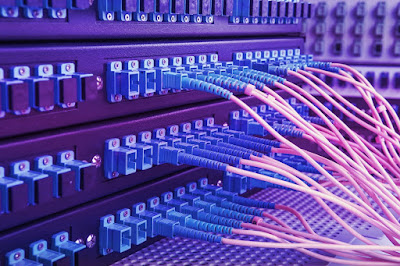Use of "broadband"
Use of "broadband"
(What is Brodband?) :
Broadband is a high speed internet connection, with speeds of at least 200 kilobytes per second, very high speed. Broadband is usually used in data transfer to co-axial cable, optical fiber cable, satellite communications, micro-wave communication or networking process.
Due to the variation of data communication speed, the rise of different bands And these bands are again used to transfer data to different speed technologies. Some of them are DSL. The full form of DSL is the Digital Subscriber Line, which connects through Copper's telephone line.
Line Way Frequency divided into two (0) divisions.
Which are as follows
1. Data transmission and
2. Voice exchange
Typically DSL data speed is 768 kbps (7 kbps) to 7 mbps, but user must be within 2km from telephone office.
Faiber:
Fiber optic broadband is commonly known as "fiber". The conventional copper stays in a fast pace compared to its baux-oxyal cable. Fiber Optic Cable usually uses light signal or light waves of data transport. The data transfer rate of the fiber optic is approximately 100 terabytes per second.
Cable:
Cable broadband internet transmits data through the line of conventional cable TVs. Normally the speed of cable internet from 6 Mbps to 18 Mbps. Where better quality cable network can provide up to 75 Mbps speed. Only Internet speeds can be influenced by users within the same connection with the same cable connection.
Satellite:
Satellite broadband is basically used to travel around the globe, using satellite broadband. Satellite broadband is used where conventional broadband technologies such as DSL or Fiber Optic Cable can not be reached. Its Internet speed can be compared to the conventional DSL connection. Its speed can be 768 kbps to 10 mbps. But its speed depends on the weather and satellite positions.
Mobile Brodband:
Wireless mobile broadband technology is accessible through 3G or 4G and LTE enabled cellphones or e-book readers. Its speed depends on the data carrier and the user's distance. The fastest non-wireless technology LTE maximizes 150 mbps.
Our YouTube Channel:Click Here.
Due to the variation of data communication speed, the rise of different bands And these bands are again used to transfer data to different speed technologies. Some of them are DSL. The full form of DSL is the Digital Subscriber Line, which connects through Copper's telephone line.
Line Way Frequency divided into two (0) divisions.
Which are as follows
1. Data transmission and
2. Voice exchange
Typically DSL data speed is 768 kbps (7 kbps) to 7 mbps, but user must be within 2km from telephone office.
Faiber:
Fiber optic broadband is commonly known as "fiber". The conventional copper stays in a fast pace compared to its baux-oxyal cable. Fiber Optic Cable usually uses light signal or light waves of data transport. The data transfer rate of the fiber optic is approximately 100 terabytes per second.
Cable:
Cable broadband internet transmits data through the line of conventional cable TVs. Normally the speed of cable internet from 6 Mbps to 18 Mbps. Where better quality cable network can provide up to 75 Mbps speed. Only Internet speeds can be influenced by users within the same connection with the same cable connection.
Satellite:
Satellite broadband is basically used to travel around the globe, using satellite broadband. Satellite broadband is used where conventional broadband technologies such as DSL or Fiber Optic Cable can not be reached. Its Internet speed can be compared to the conventional DSL connection. Its speed can be 768 kbps to 10 mbps. But its speed depends on the weather and satellite positions.
Mobile Brodband:
Wireless mobile broadband technology is accessible through 3G or 4G and LTE enabled cellphones or e-book readers. Its speed depends on the data carrier and the user's distance. The fastest non-wireless technology LTE maximizes 150 mbps.
Our YouTube Channel:Click Here.













No comments